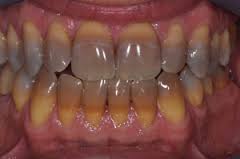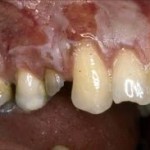Are you unhappy with your Tooth Whitening results? Complaints about failed teeth whitening results are quite common. I will attempt to address some of the reasons why people may feel their teeth whitening treatments failed.
Unrealistic Expectations
Patients with very white teeth, especially those who bleached their teeth before, may find that the teeth whitening results are not very spectacular. This is usually not because of failed teeth whitening, but simply because of the fact that there is a limit as to how white the teeth can be.
On the other hand, patients with extremely dark, stained teeth, especially those with Tetracycline stained teeth or severe Fluorosis, may also struggle to get the desired results. Regular over-the-counter products or even professionally prescribed whitening products, will probably whiten the teeth slightly, but not give you that Hollywood smile you may desire.
It is also important to remember that older people’s teeth don’t bleach as quickly and effectively as young people’s teeth.
Poor Quality or Inappropriate Teeth Whitening Products
It is very important to do research on the tooth whitening product you want to use. Ask your dentist or friends to recommend a whitening product. You can also read product reviews before choosing one. Failed teeth whitening is often the result of inferior or inappropriate bleaching products. Make sure that your bleaching agent is still fresh and not past it’s expiry date. Carbamide peroxide and Hydrogen peroxide will not be as effective as it should be if it is old or weren’t kept cool enough. Some products, especially toothpastes, claiming to be ‘whitening’ do not actually bleach the teeth and only helps to keep the teeth clean and tatar free.
Tetracycline stained teeth or severe Fluorosis
These teeth are notoriously hard to bleach. A lot of the failed teeth whitening cases fall into this group. Most common bleaching methods will not be sufficient and these patients will often need to consider porcelain veneers or crowns to get the desired improvement. Kӧr Whitening Deep Bleaching System is probably the only system that can really, drastically whiten these teeth, and only after weeks (perhaps as much as 6 weeks) of at-home bleaching, combined with in-office treatments. Unfortunately the Kӧr Whitening system is expensive and not available in all countries. Even after using this bleaching system, the teeth may not be perfectly white.
The teeth do not match the shade of previously placed restorations
People with crowns, bridges, veneers or tooth colored fillings should know that these restorations will not whiten when using bleaching agents! If you have such restorations on teeth that are visible when you talk or smile, they may need to be replaced after whitening your teeth.

Crown Darker than the other Teeth
Very Painful and Sensitive Teeth due to Teeth Whitening
Unfortunately it is quite common to get tooth sensitivity during or after tooth whitening. If a person has very sensitive teeth – even before the bleaching treatment – the teeth can turn out to be quite painful when they’re getting bleached and often for a day/more after the treatment.
How to limit the pain/sensitivity due to teeth whitening:
- See your dentist before starting treatment. It is very important that you do not have cavities or leaking fillings if you intend to bleach your teeth. Exposed, sensitive toothnecks can also be covered to limit problems with sensitivity.
-
Use desensitizing products. If you struggle with sensitive teeth in general, bleaching your teeth may not be the best idea, but if you still want to proceed, use a product like GC Tooth Mousse to help and reduce the sensitivity before, during and after treatment. Even if you do not usually struggle with sensitive teeth, it may be worthwhile to use a product such as: GC Tooth Mousse (before, during and after bleaching) or Reminralization gel after whitening treatment.
- Low concentration bleaching agent. Use a bleaching product with a relatively low concentration Carbamide Peroxide (e.g 10%). It may take a bit longer to get the desired shade, but your teeth will end up just as white as those who choose a stronger product.
- Slow down the bleaching regime when bleaching at-home. If you find that your teeth start to get sensitive, use the whitening product for shorter periods of time and use it less often, e.g. only every second day.
Irritation of gingival (gums) and other soft tissues of the mouth
If a high concentration bleaching gel is in contact with soft tissue in your mouth, it can cause chemical burn which is very painful. Take care to wipe away any excess bleaching gel from your gums after placing bleaching gel on your teeth. Do not be tempted to use bleaching agents with a very high carbamide peroxide or hydrogen peroxide concentration as you will be much more likely to burn your gums.






